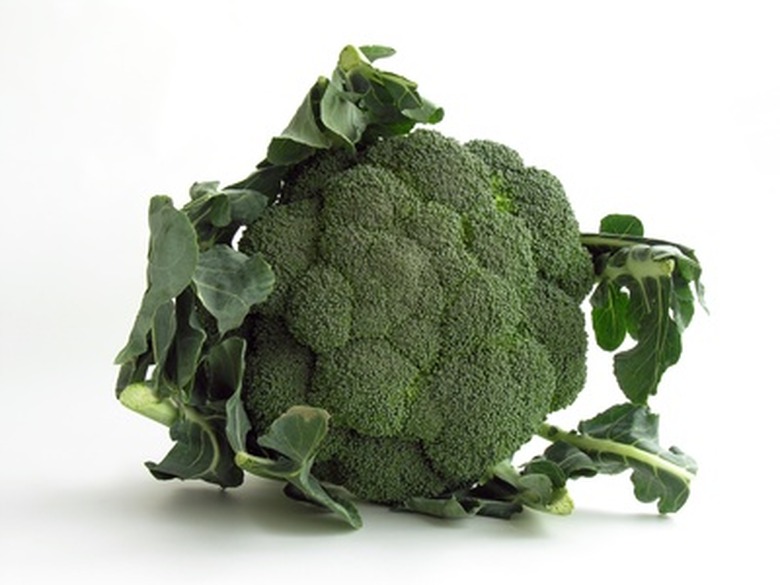Vegetables To Grow In Your Garden In Connecticut
Even the most stubborn Connecticut gardeners know that certain vegetables are risky to attempt in New England, with its cool nights, wet springs and short growing season. Don't give up on your heat-loving favorites; try the new varieties of tomatoes, peppers and even peanuts that are bred for shorter growing seasons than the traditional varieties. But the backbone of your vegetable garden should consist of the tried and true crops known for doing well in Connecticut.
Salad Greens
Lettuce grows happily in Connecticut, provided you can protect it from intense heat. For spring and fall crops, plant lettuce seeds directly in the ground in a sunny part of the garden, or transplant your seedlings there. Mid-summer plants appreciate being shaded by taller crops or the north side of a shed. Loose-leaf types tend to be less fussy for the home grower than Iceberg-types, so consider a mix of Romaines and Boston lettuce. Most seed catalogues and nurseries stock dozens of other varieties that will do well in Connecticut.
- Even the most stubborn Connecticut gardeners know that certain vegetables are risky to attempt in New England, with its cool nights, wet springs and short growing season.
- For spring and fall crops, plant lettuce seeds directly in the ground in a sunny part of the garden, or transplant your seedlings there.
Cole Crops
Most members of the cole, or cabbage family, flourish in Connecticut. Cool-season members of this family of plants include broccoli, Brussel sprouts, cabbage, Chinese cabbage and kohlrabi. They prefer sun but can take some shade, especially in mid-summer. These leaf-and-stem crops appreciate large amounts of aged manure, compost or other nitrogen-rich fertilizer. Use about a shovelful of fertilizer per plant.
Cooking Greens
Many cooking greens–some of which overlap with the cole family–are well-suited to Connecticut gardens. These include spinach, kale and chard. Spinach and kale can be direct-seeded into the garden as soon as the soil can be worked, sometimes up to two months before the last frost date. Sow spinach and kale one-half inch deep, and thin to 12 inches apart after germination. Wait until two or three weeks before the last average frost date to sow chard and thin to about 8 to 10 inches between plants. If you don't get a chance to plant until Memorial Day, buy seedlings at the nursery and set them 12 inches apart for spinach and kale, and 10 inches apart for chard.
- Most members of the cole, or cabbage family, flourish in Connecticut.
- Spinach and kale can be direct-seeded into the garden as soon as the soil can be worked, sometimes up to two months before the last frost date.
Beans
The classic "green bean" works well in southern New England, as does the yellow wax bean. Grow either bush or pole beans. Lima and soy beans take longer to ripen and may be a bit of a risk in New England. If you do attempt them, look for seed packs with the shortest number of growing days.
Peas
Peas are one of the few crops that allow Connecticut growers to get their hands dirty in early spring. Weather permitting, plant peas around St. Patrick's Day. Pea varieties range from bush to pole type, and include sugar and snap varieties. All do well in southern New England. Plant twice, for early summer and late fall crops.
- The classic "green bean" works well in southern New England, as does the yellow wax bean.
- Peas are one of the few crops that allow Connecticut growers to get their hands dirty in early spring.
Root Crops
Beets reward their growers two ways–with the classic red root and with their leafy tops, which make great cooked greens. The conventional wisdom for potato gardening is that white potatoes grow best north of the Mason-Dixon line, and sweet potatoes to the south. Look for seed potatoes that best meet your needs, whether you want small, "new" potatoes during the growing season, or "keepers" that work best for root cellar storage. Other Connecticut-friendly root crops include carrots, radishes, parsnips and turnips.
Squash
Just about every type of squash does well in Connecticut, from summer zucchini to winter's butternut squash. Choose winter squash varieties with the shortest number of days to harvest to ensure they'll ripen before autumnal frosts.
Perennial Vegetables
Most of the familiar perennial vegetables–and some of the forgotten ones–thrive in Connecticut. Asparagus, horseradish and rhubarb seem to prefer Northern climates. Colonial housewives often relied on lovage, a towering perennial which makes a non-fussy celery substitute. Good King Henry is a broad-leafed vegetable that provides leafy greens and tender shoots, and, like lovage, emerges early. Lemony, large-leafed sorrel can be eaten either fresh or cooked in soups and sauces. Because perennial vegetables are permanent garden plants, give them their own garden, or plant them along a border of your annual vegetable garden.
- Beets reward their growers two ways–with the classic red root and with their leafy tops, which make great cooked greens.
References
- "The Garden Primer;" Barbara Damrosch; 1988
- United States Department of Agriculture Home and Garden Bulletin: Selecting Vegetables
